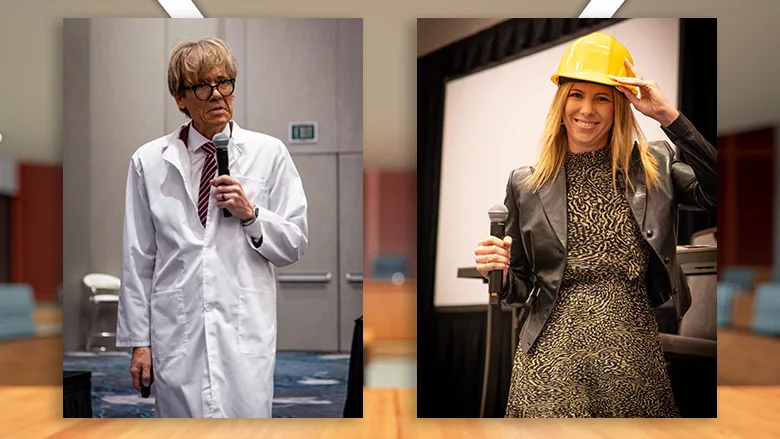Attorneys Stress the Importance of Communication during Restoration Process

Background photo: onurdongel / iStock / Getty Images Plus via Getty Images
Portraits: Ed Cross and Caroline Tucker
Homer the Homeowner. Connie the Contractor. Doktor Cross.
These are the characters attorney Ed Cross brought out during his keynote presentation at The Experience this past September in Las Vegas. Cross and his associate, Caroline Tucker, used a mix of humor and lecture to deliver a message to restoration contractors: communication and clarity will keep you out of court.
The session started with a skit portraying an encounter between a homeowner (Homer) and a contractor (Connie). Homer had suffered considerable damage to his home, but was mostly occupied with finding his pet snake. Connie was uninterested in the snake and much else Homer had to say. She only wanted his signature on a work authorization form.
When the bill for the work came, the final cost shocked Homer. He refused to pay and threatened to sue. The scene stopped there and Cross and Tucker proceeded to break down the many mistakes Connie made.
Connie had told Homer the project could cost six-figures. He took this to mean $100,000. Instead, the bill topped $300,000. Cross said people in need of a restoration contractor have already heard plenty of bad news. They don’t want to hear any more and listen poorly as a result. That’s how six figures becomes $100,000.
This means restoration contractors need to engage in active listening. Tucker said this means creating eye contact and presenting an open body stance. The contractor needs to hear out the client without interruption, providing verbal cues at the right times. They need to listen without judgment and avoid rushing the other person.
“Listen with the sole purpose of listening,” Tucker said.
Listening creates a connection between the contractor and the customer. It also helps contractors avoid some customers, those who create more expense than profit.
“Watch out for the red flags, because there will be plenty out there,” Cross said. “Don’t yield to the temptation to take every single job.”
That last line drew a loud round of applause from the audience.
Only Real if in Writing
After the initial meeting, it’s crucial to create a clear record of what was said. Tucker recommends recording a voice memo immediately after the conversation. Then put everything down in writing and send it to the client, asking for any clarification or corrections immediately.
“If it’s not in writing, it didn’t happen,” Cross said.
Photos are also important. They show the exact state of the situation. But pictures are meaningless without context. That’s why contractors need to carefully label each photo.
Contractors are often not the ones interacting with customers themselves. That’s why they need to know what conversations actually take place, Cross said.
“What we see so often is that people at the top of companies don’t know what their people are doing down in the trenches,” he said.
Staff need to clearly explain the price, scope and payment options for any project, he said. There are three elements that define a project: speed, quality and cost. Contractors and their staff need to determine which is most important to the customer.
They also need to empathize with the clients.
“Take a moment to acknowledge the human experience and suffering these people are going through,” he said.
This proves important on several levels. One is that the contractor wants to create an alliance with the homeowner, especially if issues arise with the insurance adjuster. The contractor needs to explain, Cross said, that while all three are working toward the same goal, they don’t all have the same priorities.
Communication continues its critical role when something goes wrong. Contractors need to respond to every question with a clear answer.
Contractors need to avoid a combative tone and anything that resembles bullying. Never start a sentence with “you.”
“If you would not say this to somebody face-to-face, don’t say it in an email,” Tucker said.
Basic communication seems simple, yet is overlooked. It requires listening carefully to the other person and then making a clear response. It’s the key to avoiding most problems.Looking for a reprint of this article?
From high-res PDFs to custom plaques, order your copy today!








